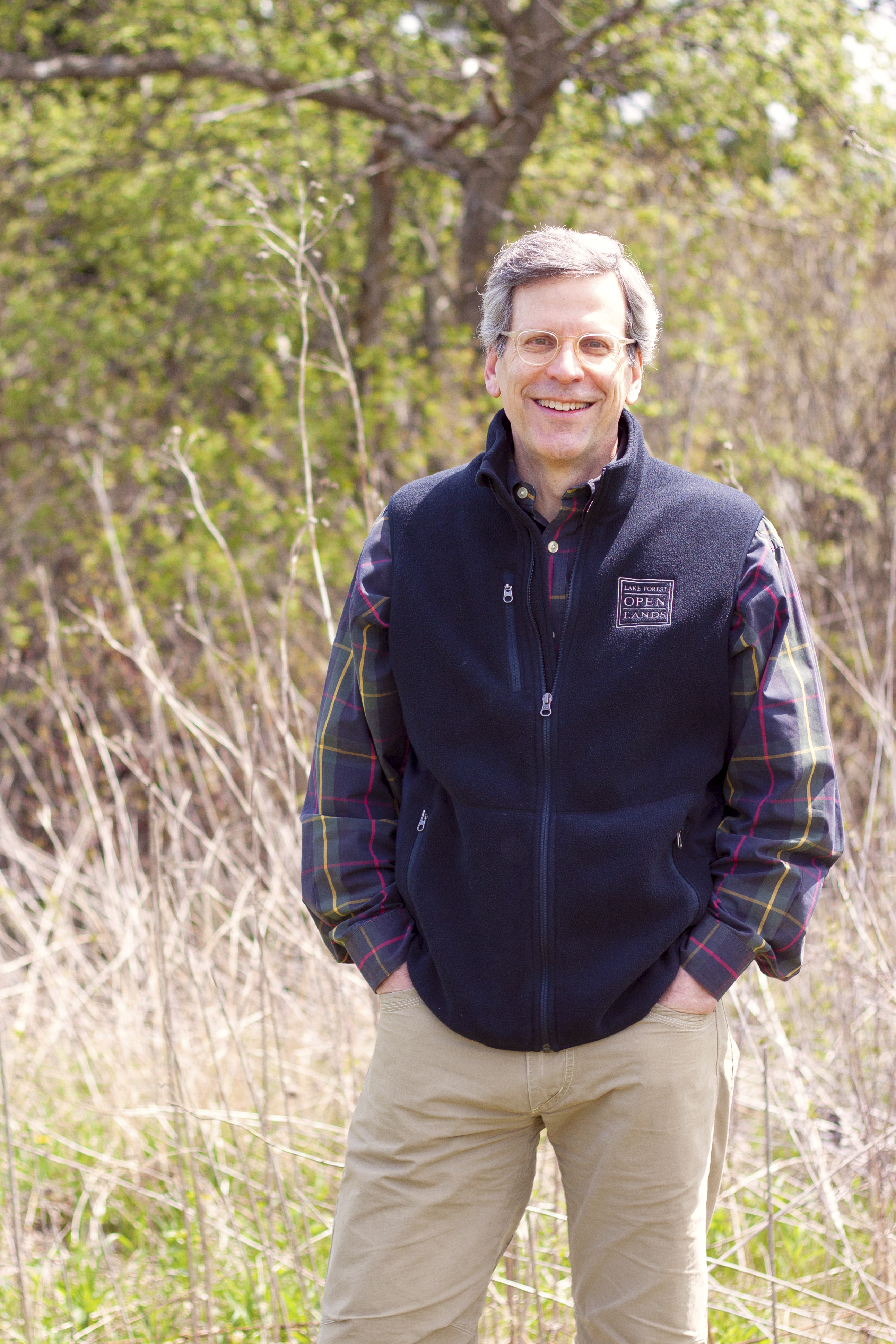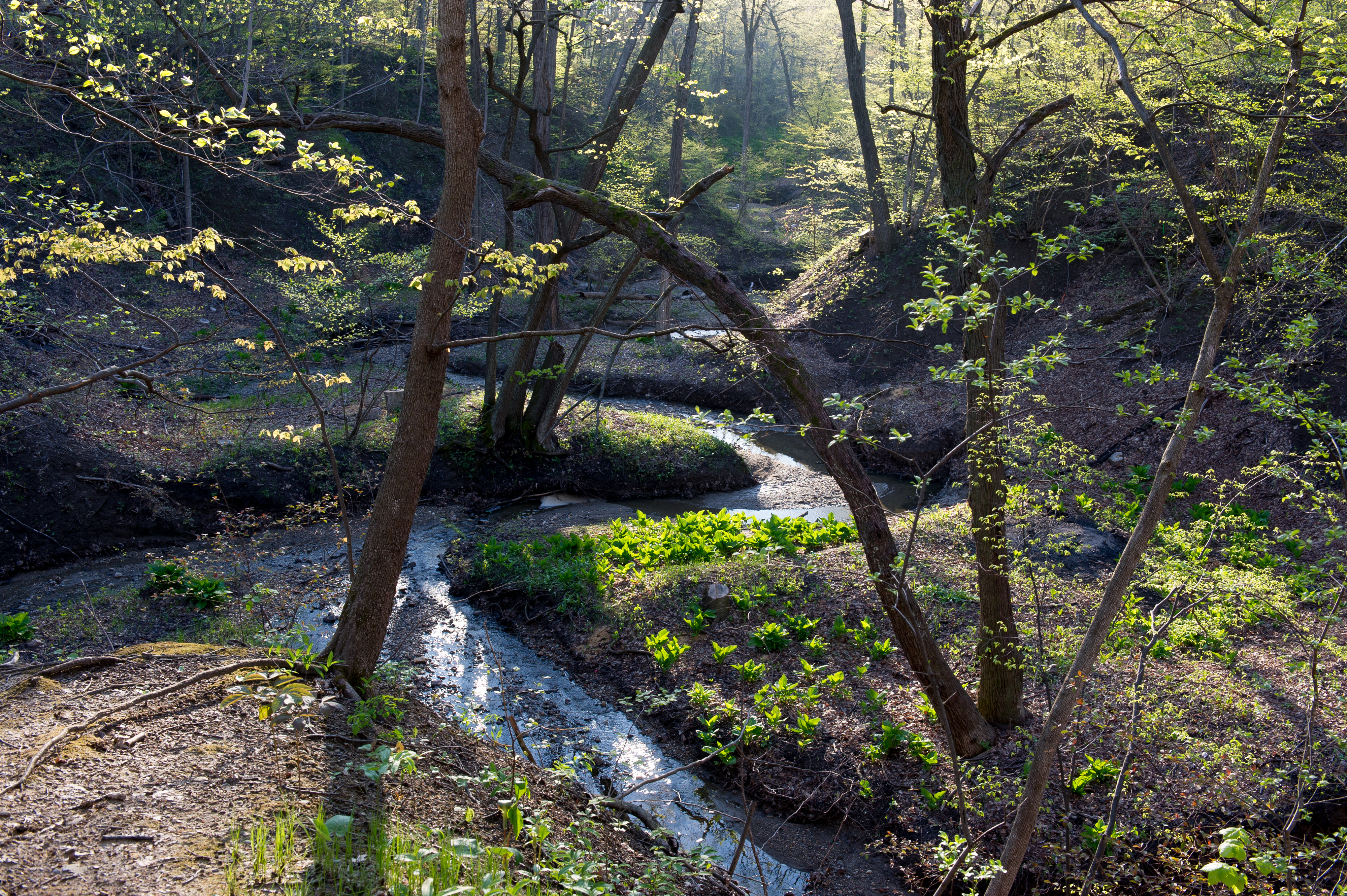Lake Forest Open Lands’ Preserves Become a Haven During Pandemic

By David A. F. Sweet
Even homebodies are desperate to get out of their houses these days. Problem is, their favorite spots are shuttered. Shops, libraries, even beaches are off-limits amid the pandemic.
Yet in Lake Forest, more than 800 acres encompassing walking trails, savanna, marsh marigolds, and bobolinks remain open. That’s the space maintained by Lake Forest Open Lands Association, a private non-profit started by citizens more than half a century ago.

“We are seeing how the benefit of a connection to nature is more relevant in our lives than ever before,” says John Sentell, head of Lake Forest Open Lands.
With so much closed in town, it would have been easy for Lake Forest Open Lands to follow suit. Instead, its workers placed signs on 12 miles of trails emphasizing the need for social distancing and reworked paths so hikers wouldn’t walk past others heading the opposite direction.
“We’ve had to work extra hard to keep the nature preserves open, but we felt it was imperative for people to get outside,” said John Sentell, president and chief executive officer of the organization for the past decade.
What one sees and hears on the trails can be astonishing. Just steps from busy Deerpath, a road that bisects the town, a deer stares silently while frogs croak loudly. Avoid the puddles while taking the trail north past the Skokie River and its severely bent trees, and all of a sudden a vista of perhaps 20 acres opens up that can’t be seen from anywhere else, save the backyards of the elegant homes nearby. The weaving grass path cuts through prairie and wetlands.

Hafner Meadow is a beautiful stretch of land only steps from busy Green Bay Road — but visible only to hikers and a few residents with nearby homes.
“Even though you’re 10 minutes from your back door, you feel like you’re hundreds of miles away,” said Sentell, whose enthusiasm emanates even across telephone wires. “We don’t mind a rickety bridge or a muddy trail because we aren’t trying to look like a park.”
Those who consider the Chicago area flyover country — a flat expanse of no value — truly don’t know what they’re missing. What other area in the United States features one of the largest bodies of fresh water in the world, along with bluffs, ravines, wetlands, savanna, and prairie? Sentell points out that the plow has never hit Open Lands’ Shaw Prairie, which rests behind Howard Van Doren Shaw’s old house, whereas nearly all of Illinois’ original prairie has become agricultural fields.

Children love running around the Open Lands’ trails. They enjoy classes offered by the non-profit.
Lake Forest Open Lands will open its first preserve by Lake Michigan next year on a 61-acre strip that abuts the Fort Sheridan Forest Preserve. The organization has earmarked millions of dollars to construct bridges, create trails and more at the Jean and John Greene Nature Preserve at McCormick Ravine.
“It’s the finest ravine on the lake shore,” said Sentell, who was chief operating officer and executive director of the Chicago-based Wetlands Initiative before running Open Lands. “Portions of it are in its original habitat because it’s been ignored for so long. There are oak trees that go back to the late 1700s.”

“It’s the finest ravine on the lake shore,” says John Sentell of McCormick Ravine, which will be opened with trails in 2021.
How can Open Lands afford purchasing, restoring and maintaining land — as well as removing relentless invasive species such as buckthorn — when it receives no tax dollars? Aside from counting more than 1,000 members who pay a minimum of $65 annually to access its preserves, the fundraiser Bagpipes & Bonfires draws more than 1,500 people to the Middlefork Farm Nature Preserve each year. Sponsored by big Chicago corporations such as Northern Trust and Packaging Corporation of America, the outdoor bash features everything from kilted skydivers to men of brawn who attempt to flip 25-foot logs.
Aside from a large preserve in Highland Park operated by Chicago-based Openlands, most North Shore communities have little to no open space beyond what the county forest preserves offer. Sentell embraces what conservationist Aldo Leopold once wrote: “We abuse land because we see it as a commodity belonging to us. When we see land as a community to which we belong, we may begin to use it with love and respect.”

The annual Bagpipes & Bonfire event draws 1,500 or adults and children.
The quote especially resonates with him today.
“In these unprecedented times, we are finally seeing and experiencing the intersection of human health and nature,” he said. “We are seeing how the benefit of a connection to nature is more relevant in our lives than ever before. Time in nature reduces stress. It improves family bonds. The best moments of my life have always been in nature.”
Unsung Gems columnist David A. F. Sweet can be followed on Twitter @davidafsweet. E-mail him at dafsweet@aol.com.







